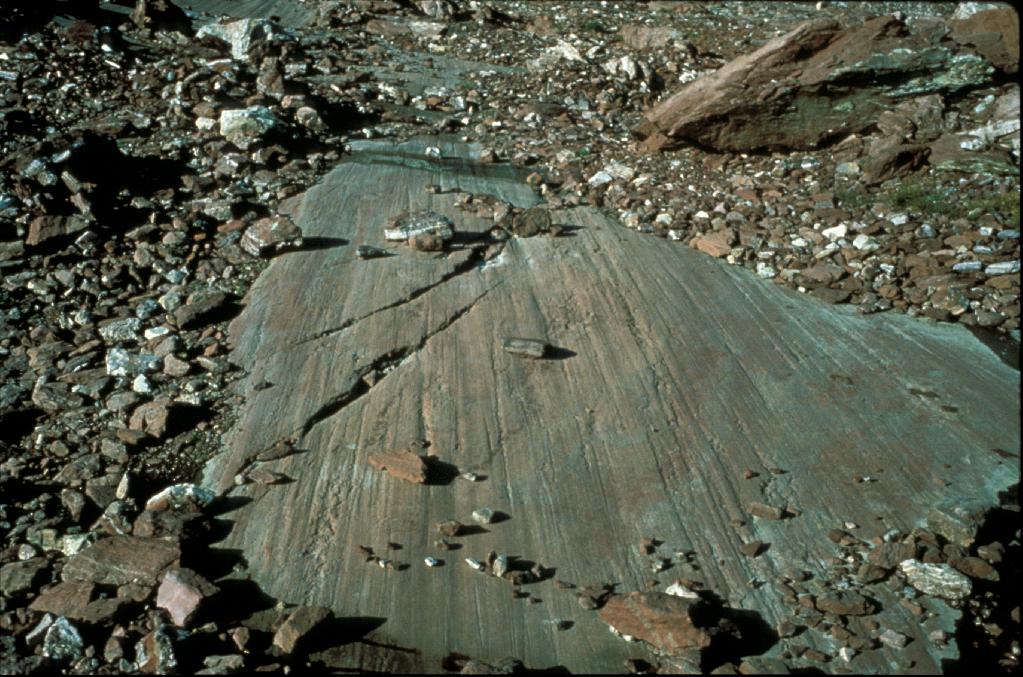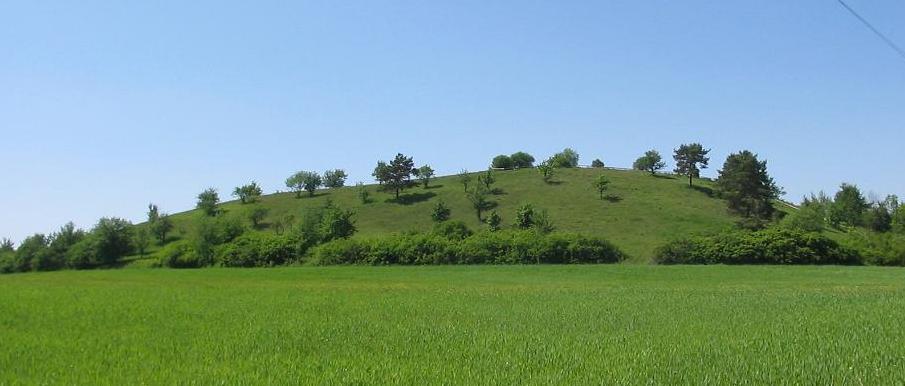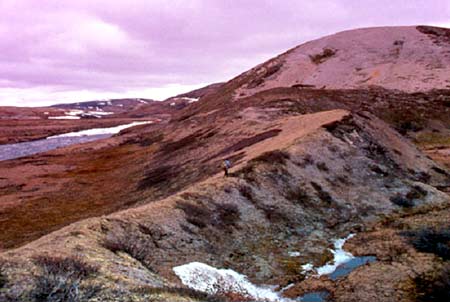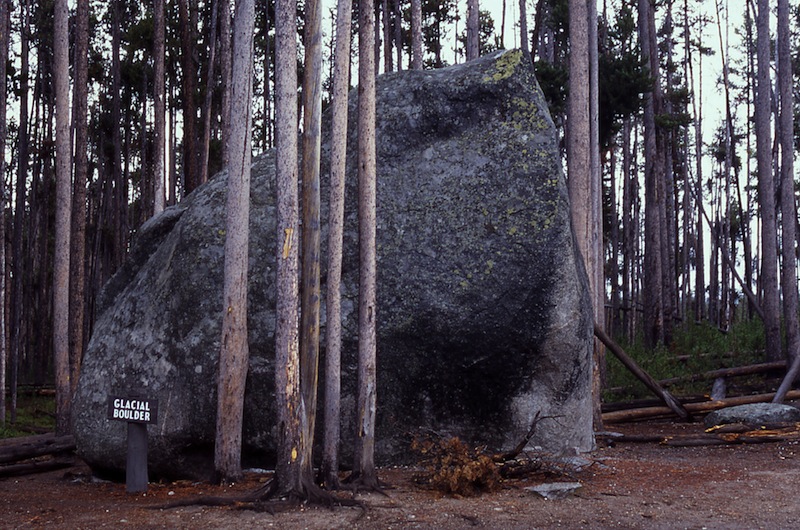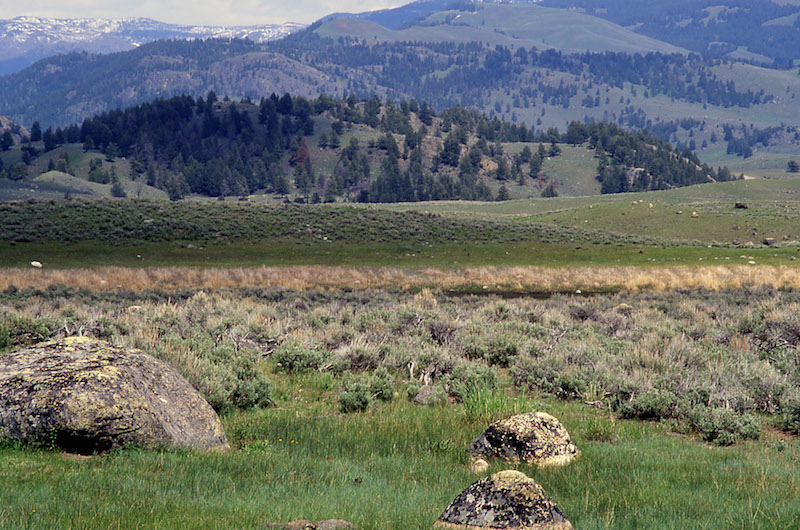The movement of glaciers across a landscape throughout the geological past is evident through many erosional and depositional features (Figure 1). See Types Section for descriptions of glacier types.

The following describes various erosional and depositional features and processes generated on a glacial landscape. Hover over images for credit.
Abrasion: the mechanical rubbing of ground rock with glacial rock material along the underside of a glacier. This frictional rubbing grinds the surface, leaving abrasion marks (striations, grooves and chatter marks).
Glacial Plucking: this process occurs when ground rocks attach to the base of a glacier as it slides across the landscape. A resultant rough ground surface is generated as multiple rocks are “plucked” from the bedrock.
Roche Moutonnée: convex, hill shaped landscape features created from the movement of glaciers over the bedrock. The leeward side of the “hill” is rough from glacial plucking, while the opposite side is smoothed from ice flow.
Drumlin: a large hill created by the deposition of till. These hills are usually longer than they are tall, with a tapered end and often occur in groups.
Esker: elongated, uniform rifts of sorted glacial sediment formed from glacial streams within and under glacier ice.
Ground moraine: relatively flat landscapes formed from rapid retreat of glaciers on the ground surface. Extensive deposits of various rock types and sizes are often seen on ground moraines.
Pothole: large pits in bedrock generated from the movement of rapidly flowing water through glacial ice onto the ground surface. The force of the water, along with sharp, quickly moving rock material produces these large underground holes.
References
Glaciers Links
Material on this page was provided by Maren Pauly, Department of Geography, University of Waterloo.
Last updated on 06/11/2017

